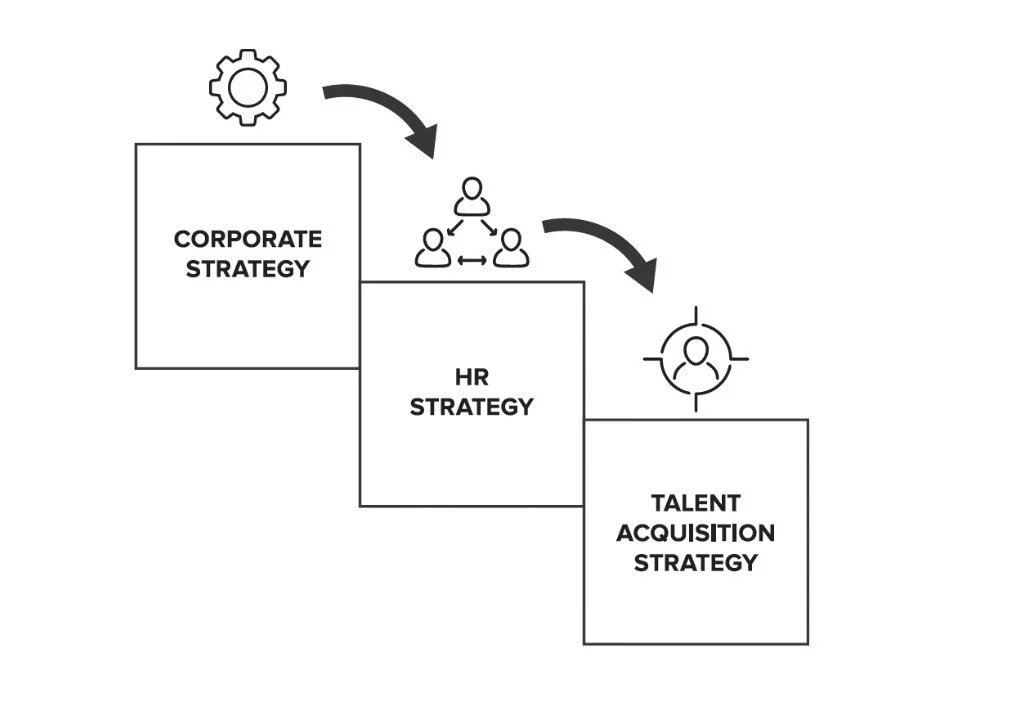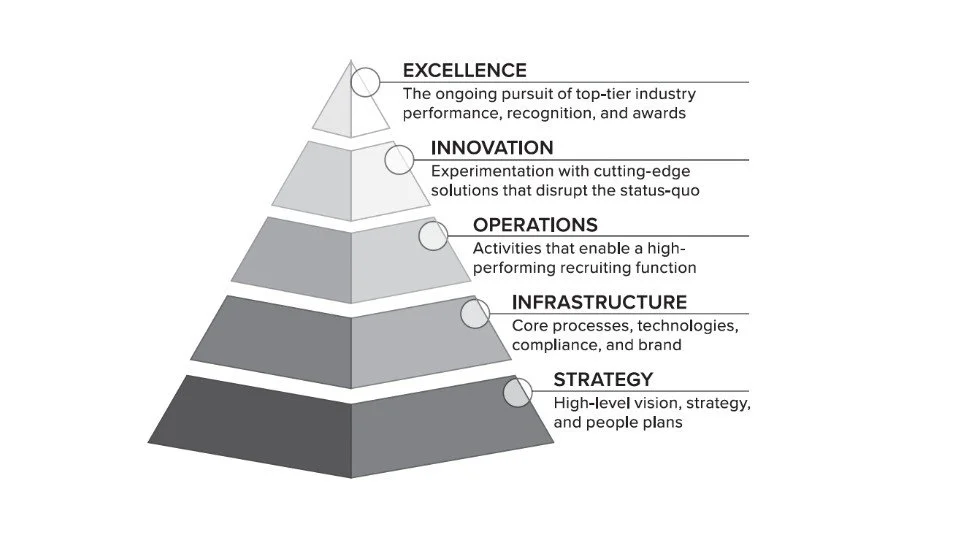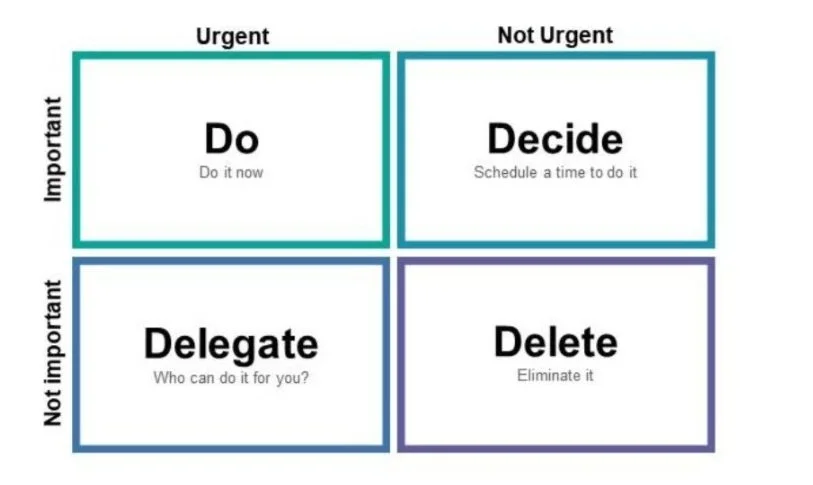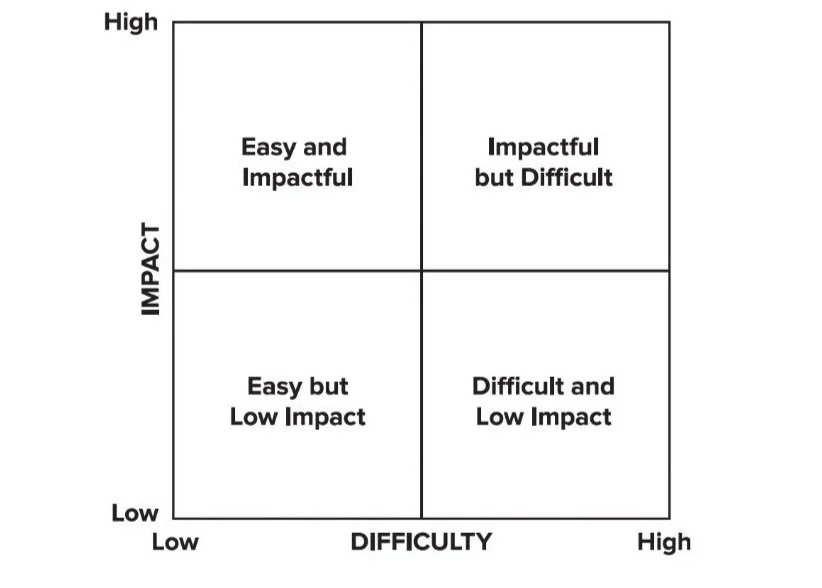If you’ve ever felt like you’re at your limit, overloaded, and unable to take on another meeting, project, assignment, (or vacation)…chances are you have a PRIORITIZATION problem -- not a WORKLOAD problem.
Sure, it could be that you’re under resourced and overtasked but many times the issue is that you don’t have a method for prioritizing your work.
When you don’t have proven methods, your entire to-do list feels important.
And that, my friends, is the source of your overwhelm. 😩
NOT EVERYTHING IS IMPORTANT
Don’t get me wrong, all of those emails, tasks, meetings and projects on your to-do list “have importance”…to someone.
But they shouldn’t have the same level of importance. There should be different levels depending on different things.
One of your core jobs as a leader is to figure out what is most important and attack those things in a logical order. Or decide not to do them.
In this article, I’m sharing 5 methods that have been helpful to me over the years when I hit peak workloads, planned out my calendar for the week/month/year, or needed to make a critical decision.
Using these methods allows me to go beyond simply organizing a to-do list to being a ruthless prioritizer of work on an ongoing basis.
WHAT IT MEANS TO BE "RUTHLESS" 🥷🏼
Being a ruthless prioritizer means that you adopt an agile mindset when it comes to how you intake, schedule, and perform work.
You don’t get married to projects. You don’t fall in love with ideas. You stay cold and focused on delivering the most important, highest impact items on your strategy.
If a project is dragging along, be open to killing it. If your team doesn’t have the bandwidth to do something, post-pone it. If that thing your boss wants you to do is high effort, low impact – push back.
A ruthless prioritizer is in a constant state of challenging the notion that you “have to do” something. There are very few times when this is the case. The odds are, you just want to do it. Or someone wants you to do it.
But you can’t just ruthlessly redline things off your to do list. You need some data to support your case. Or some methods you can use to justify your decision.
Let’s look at a few methods you can use to streamline your work, lower your stress, and make some time to focus on what really, really, really matters.
THE WATERFALL METHOD
In the last article, I wrote about something called an Action Plan. It’s document that helps you track all the projects tied to delivering your strategy for the year.
When prioritizing strategic plans, I like to use a more strategic methodology for determining what has importance. I call this the “Waterfall Method”.
How to Become a Ruthless Prioritizer
As the name and image imply, you simply follow your orders based on company hierarchy. If your CEO has an initiative and you have role to play in it…you better believe it lands on your to-do list. Same thing with your the leader of your business unit. And if there’s any white space left on your calendar, that’s where you slot time for your own departmental projects.
THE PYRAMID METHOD
While the Waterfall method is an effective, company-driven, hierarchical approach, the Pyramid method is more relevant for your own departmental projects and initiatives. This approach is adapted from Maslow’s hierarchy of needs whereby the bottom of the pyramid includes the most basic, fundamental needs. At the top, you enter the “nice-to-have” zone. Here’s what this looks like for a recruiting function:
When you’re working on your strategic action plan, run your projects through this pyramid as a filter.
Are most of your projects landing on top of the pyramid, in the middle, or at the base? The right distribution will be directly related to where you are in your journey as a department. If you’re a well-oiled machine, you’ll have lots of projects in the middle and top. If you’re just building or rebuilding your function, you should be focused on the base.
THE 2X2 METHOD
If you could see the notebook I carry around, you’d see that it’s full of hand-drawn 2x2 grids. I love them because they help me rapidly determine the importance of something. Usually something tactical.
I also love them because they’re flexible. I can assign anything I want to the X and Y axis to help me make decisions. Here are some recent 2x2 frameworks I’ve used:
Effort vs Impact
Value vs Risk
Cost vs Benefit
Quantity vs Quality
Resources vs Output
And if you needed a visual for what a 2x2 grid looks like...here she is:
THE WORST-CASE METHOD
When I’m being extra ruthless, I deploy the Worst-Case method. It’s a series of 3 questions I ask myself to determine where to slot things on my to-do list or if I should slot them at all.
These same three questions are critical to discuss with other people who are involved in the decision. You’ll need their agreement to proceed.
Here are the three questions:
If I don’t do this PERFECTLY, what’s the worst that can happen?
If I don’t do this RIGHT NOW, what’s the worst that can happen?
If I don’t do this EVER, what’s the worst that can happen?
If your answer to any of these questions is “nothing”, it might be an opportunity to scrap the work.
It’s a raw and ruthless way to prioritize a task or a project and a great way to challenge yourself and others on the importance of doing certain work.
RECLAIM YOUR SANITY 😥
Oftentimes we suffocate not from the weight of responsibility, but from the inability to discern what really matters. This isn't about time management; it's about reclaiming our agency using tools to justify our decisions. This is a daily struggle but there are some clear and obvious solutions. The only question that remains then is...
Will you continue to be a victim of thinking everything is urgent and important, or will you leverage the tools to shape your work and reclaim your sanity?
THE EISENHOWER METHOD
The Eisenhower method is a more specific version of the 2x2 method. It not only helps you determine what's important, it also helps you determine what to do with the work that you’ve identified. It uses the do, decide, delegate, and delete framework.



